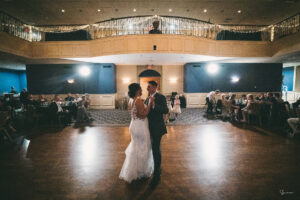5 Things You Didn’t Know About Your Wedding Cake
They were originally a symbol of fertility.
Wedding cakes are steeped in tradition since medieval times. Originally they were made with only wheat (a symbol of fertility and prosperity) and thrown at the bride. Eventually, they became edible, although they were broken over the bride’s head as a symbol of breaking the bride’s virginity and the groom’s dominance over her. (Was this the fore runner for smashing the cake into one’s face?)
Wedding cake crumbs were kept under pillows.
Fortunately as cakes became larger, this tradition disappeared. During the 17 century, wedding cakes were simple tiered plum cakes. During this time, the wedding cakes crumbs were often found under pillows of single attendees, hoping to dream of future spouses.
They are based on a church.
In 1703 a man named Thomas Rich, a baker’s apprentice, fell in love with his employer’s daughter and asked her to marry him. He wanted to make an extravagant cake, so he drew on St Bride’s Church in London (see photo on the right) for inspiration.
Originally, such cakes were reserved for royalty only. Today with the use of pillars and harden icing, it is not unusual to see five tiered cakes, although Kim Kardashian had to have eight (see the image above — it cost $20,000!) However, three tiered cakes seem to be more in vogue; the bottom for the reception, the second layer for sharing and the third layer to keep for the first anniversary.
They represent the first task that a pair does in public as a married couple.
By the 19th century, cutting the wedding cake became the symbol of the first task that the wedding pair did jointly as a married couple. Then came the tradition of feeding a piece to one another, a symbol of commitment of the newly married that they could provide for each other. This was supposed to be a romantic gesture, showing love and affection.
Wedding cakes are not always white.
It is not necessary to have a white wedding cake, another traditional symbolism of purity. In contemporary times, brides are coordinating their cakes with color schemes and textures (laces, ruffles, etc.) of their wedding apparel. Cakes have different tiers of hues, usually darker to lightest. Real flowers, leaves or fruit can adorn the tops. Other tops have stenciled scenes or portraits of the bridal couple.
Thinking about a custom wedding cake for your reception?
Are you looking for a unique wedding cake? Let McHale’s pastry chef create the custom wedding cake of your dreams for as low as $3.50 per guest!



